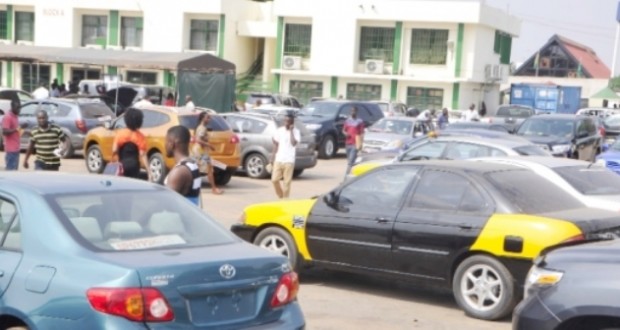
Ghana’s laws stipulate unambiguously that every 18-year-old could acquire a driver’s licence and drive. At the same time we are told that, although not encapsulated in law, driving is a privilege and not a right.
These two diametrically opposed statements may create some initial confusion for any potential driver intent on acquiring a driver’s licence, particularly for the purpose of work.
Whereas certain individuals for a scope of reasons may not want to drive, the issuing authority – in this sense the Driver and Vehicle Licensing Authority (DVLA) – may equally determine that, for a plethora of reasons, certain people may not be permitted to drive. And that is where, I believe, the point about driving being a privilege and not a right emanates.
From the licensing authority’s point of view, plainness, for instance, is so critical to driving and for that matter a person who is completely visually impaired or who suffers from epilepsy are not permitted to drive. Although physically challenged persons who cannot use both feet are also debarred from driving, it is possible for them to be given the clear to drive if the vehicle could be retrofitted for them to use the hand, for example, to control the breaking system as well as do other things that could have been done by the legs. In other words vehicles could be customised for the physically challenged to use their hands instead of the legs to operate systems in the vehicle that the legs should have operated.
The history of driver testing in Ghana
The history of driver testing in Ghana is an interesting one. Before 2003, the assessment of drivers took the form of an oral test followed by the in-traffic test. In 2004, the Authority introduced the written test but had the onerous duty of translating to every applicant who could not read the questions that were set in the English language before they provided answers. What that meant was that, on occasions where the technical persons of the DVLA did not speak the language of the applicant, they were allowed to provide an interpreter to facilitate the test.
Obviously, the process was too cumbersome. So, from 2004, the Authority started a process towards the elimination of the translation and duly implemented it in 2007. At that point, applicants read the questions on their own, answered them and they were then marked by technicians of the Authority.
Unfortunately, not long after its introduction, it became fraught with a lot of allegations pertaining to distrust, corruption, favouritism and what have you. So it was decided, finally, to introduce a new test regime that would meet international standards as well as deal with the identified bottlenecks. This gave birth to the Computer-Based Theory Test in 2014 which, to all intents and purposes, has come in very handy.
24-Hour Compulsory Learner Training
In order to ensure that persons who acquire a Driver’s Licence drive competently to help ameliorate the rising spate of road traffic crashes in the country, the Road Traffic Regulations, L. I. 2180 of 2012, made provision for the implementation of a 48-hour compulsory training for all potential drivers irrespective of whether they know how to drive before the application or not.
The applicant is enjoined by this law to first go through a driving school in order for them to be exposed to the following:
- Understanding of the legal obligations of a learner driver in relation to the law and formal procedures required of a would-be driver
- Information on driving regulations and career guidance for drivers
- Theoretical understanding of how a vehicle works and simple routine checks on a vehicle
- Understanding and knowledge of the meaning and application of the Highway Code and Road Regulations.
- Understanding of the step-by-step method of driving; and
- Maintenance and Mechanical principles.
Requirements for acquiring a Driver’s Licence as follows: applicants must be 18 years and above and of sound mind; General assessment (Physical and mental); ID Cards/Passport; and 2 passport size pictures.
The procedure includes: purchase and complete forms F and F1; physical examination and eye test; capture of biometric information and scheduling for writing test; issuance of learner permit, L-Plate, syllabus and highway code; written exams (Computer-Based Test); oral examination; in-Traffic Test; payment for licence and P-Plate; capture for drivers’ licence; and issuance of temporary licence and P-Plate.
For now, it takes the Authority three (3) months to deliver the final product, which is the Driver’s Licence, itself. DVLA is, however, putting measures in place to ensure that the waiting time is reduced to about two weeks and this will happen sooner than later.
Conclusion
The process of acquiring a Driver’s Licence is quite a simple one and its sole objective is to ensure that anyone issued with a driver’s Licence could be relied upon to drive competently rather than adding to the already existing dangers on the road.
Often times, persons who wish to acquire a Driver’s Licence, out of ignorance or some fear of possible failure, resort to the use of middlemen (Goro Boys) to help them realise this objective. But this often culminated in dire consequences including the issuing of fake Driver’s Licence by the ‘Goro Boys’. In addition, acquiring a Driver’s Licence without going through the prescribed processes means exposing oneself to danger or becoming a danger to other road users.
All potential drivers are entreated to accept the current processes as the best we can have at the moment and submit themselves to it. This is so because it is one of the surest ways through which we can reduce the unacceptably high road crash fatalities on our roads.
Thelma Botchway works at the PR Department of the DVLA




























